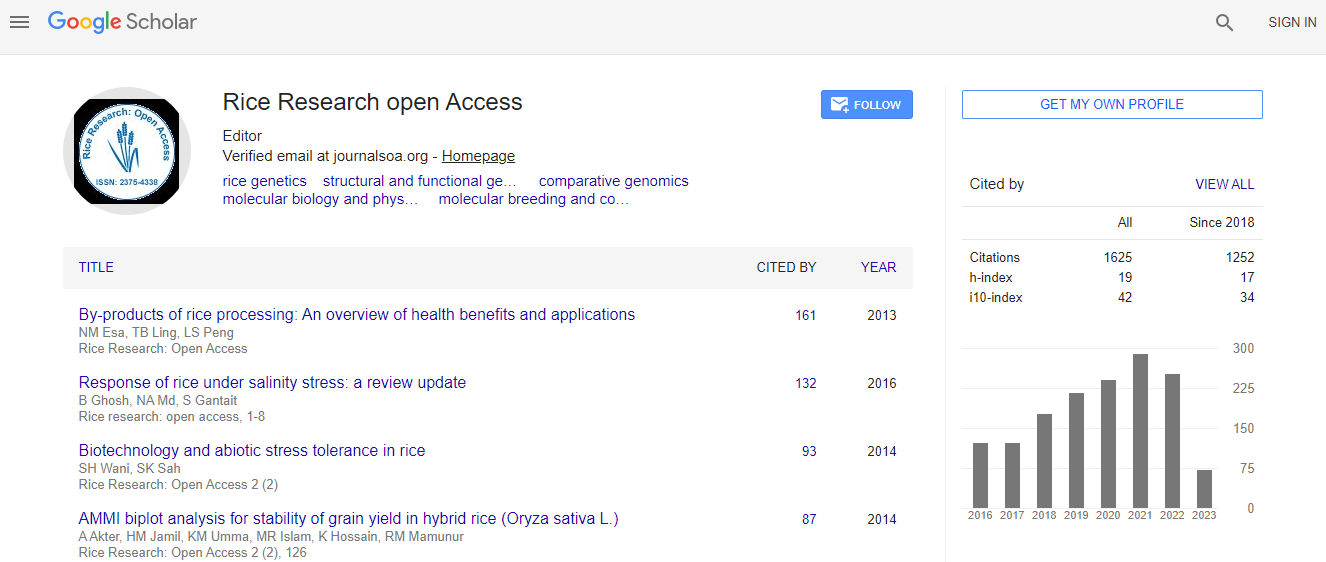Research Article
Ferric Pyrophosphate-fortified Rice Given Once Weekly Does not Increase Hemoglobin Levels in Preschoolers
| Francisco Placido Nogueira Arcanjo1*, Paulo Roberto Santos1 and Sergio Duarte Segall2 | ||
| 1Federal University of Ceara, Brazil | ||
| 2Federal University of Minas Gerais, Brazil | ||
| Corresponding Author : | Francisco Placido Nogueira Arcanjo Federal University of Ceara, Brazil Tel: +55 88 3677 8000 E-mail: placidoarcanjo@yahoo.com.br; franciscoplacidoarcanjo@gmail.com |
|
| Received August 18, 2013; Accepted September 16, 2013; Published September 19, 2013 | ||
| Citation: Arcanjo FPN, Santos PR, Segall SD (2013) Ferric Pyrophosphate-fortified Rice Given Once Weekly Does not Increase Hemoglobin Levels in Preschoolers. J Rice Res 1:110. doi: 10.4172/jrr.1000110 | ||
| Copyright: © 2013 Arcanjo FPN, et al. This is an open-access article distributed under the terms of the Creative Commons Attribution License, which permits unrestricted use, distribution, and reproduction in any medium, provided the original author and source are credited. | ||
Related article at Pubmed Pubmed  Scholar Google Scholar Google |
||
Abstract
Background: The objective of this study was to evaluate the effect of rice fortified with iron (Ultrarice®), given once weekly, and on hemoglobin levels and anemia prevalence compared with standard rice.
Methods: In this prospective quasi-experimental study, we evaluated preschoolers aged 2 to 5 years (n=303) from 2 public schools in Sobral, Brazil. Intervention lasted 18 weeks. The once weekly 50 g individual portion (uncooked) of fortified rice provided 56.4 mg of elemental iron as ferric pyrophosphate. Capillary blood samples to test for hemoglobin levels were taken at baseline and after intervention. Student’s t-test was used to assess the difference in hemoglobin within / between the groups.
Results: For fortified rice school: baseline mean hemoglobin was 12.06 ± 1.01 g/dL, and after intervention 12.14 ± 1.06 g/dL, p=0.52; anemia prevalence was 8.9% (11/120) at baseline, and 10.5% (13/120) at end of study, p=0.67. For the standard rice school: baseline mean hemoglobin was 12.40 ± 4.14 g/dL, and after intervention 12.29 ± 2.48, p=0.78; anemia prevalence was 20.8% (30/144) at baseline, and 37.5% (54/144) at the end of study, p=0.002. Considering only anemic participants, there was a significant increase in hemoglobin means before and after intervention, p=0.003 in the fortified rice school. Relative Risk was 0.29 and the Number Needed to Treat was 4.
Conclusions: This study shows that consumption of the iron-fortified rice compared to the control rice does not change hemoglobin or anemia prevalence in preschoolers.

 Spanish
Spanish  Chinese
Chinese  Russian
Russian  German
German  French
French  Japanese
Japanese  Portuguese
Portuguese  Hindi
Hindi 
